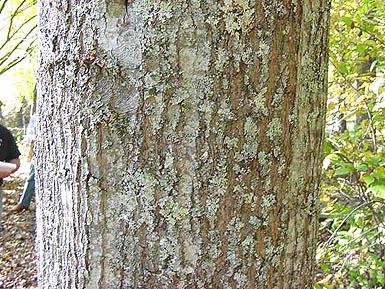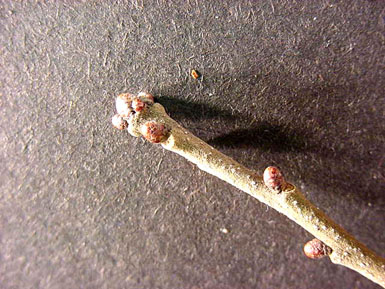Form: This is a medium sized tree reaching 70-100 ft in height and 3-4 ft in dbh. It has a rounded crown and a slender bole.
Leaves: semi-evergreen
Arrangement: alternate
Shape: varies - spatulate, oblanceolate or shallowly 3-lobed
Margin: bristle tipped
Texture: glabrous above and rarely pubescent below
Venation: pinnate

Bark: The bark is uncharacteristically smooth and thin compared to most oak species. It develops shallow furrows with wide scaly ridges.

Twigs and buds: The twigs have a light reddish-brown color, and are slender and glabrous. The buds are covered in light brown scales.

Flowers and fruit: Acorns are ½ inch in height with cap covering 1/3 of acorn.
Distinguishing characteristics: It's lower branches droop downward with age (ascending branches). Look for the small spatulate leaf shape.
Range: It occurs north to New Jersey, south to northern Florida, and west into Oklahoma.
Silvics: Water oak is intolerant to shade. It is a classic bottomland species that can sometimes be found on moist to mesic uplands as well, often when it is planted.
Ecological and cultural importance: It is a valuable source of pulp and lumber. Acorns are eaten by waterfowl, wild turkey, and various other wildlife.